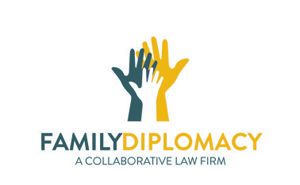In 1990, a Minnesota family law attorney named Stu Webb began promoting what he deemed “Collaborative Law,” or the practice of law separating out trial work and creating negotiation specialists. Collaborative Law is now used in Tampa Bay, throughout Florida, and around the world, as families have realized that they don’t want to be placed in the adversarial proceedings of trial practice for divorce and other personal matters.
On February 14, 1990, Webb wrote a letter to The Honorable A.M. “Sandy” Keith,
a Justice of the Minnesota Supreme Court, describing Collaborative Law. Below is the text of the letter:
Dear Sandy:
I met you at a party at Steve & Marilyn Erickson’s several years ago. I was interested in your involvement with mediation. I also heard you talk last November at the Conference for Dispute Resolution Practitioners Seminar.
I, too, took Steve and Marilyn’s mediation training and have done mediation, mediation wrap-ups and, generally, have been vitally interested in exploring alternative dispute resolution in all its manifestations.
I think I’ve come up with a new wrinkle that I’d like to share with you. One of the aspects of mediation that I feel is a weakness is that it basically leaves out input by the lawyer at the early stages (sometimes that’s an advantage!). By that I don’t mean adversarial, contentious lawyering, but the analytical, reasoned ability to solve problems and generate creative alternatives and create a positive context for settlement. Of course, these attributes of good lawyering are not utilized greatly in the usual adversarial family law proceeding either.
But you and I have both experienced, I’m sure, those occasional times, occurring usually by accident, when in the course of attempting to negotiate a family law settlement, we find ourselves in a conference with the opposing counsel, and perhaps the respective clients, where the dynamics were such that in a climate of positive energy, creative alternatives were presented. In that context, everyone contributed to a final settlement that satisfied all concerned—and everyone left the conference feeling high energy, good feelings and satisfaction. More than likely, the possibility for a change in the way the parties related to each other in the future may have greatly increased. As a result, the lawyers may also develop a degree of trust between them that might make future dealings more productive. Read more →

 There is a strong presumption in Florida family law that a child born during an intact marriage to a husband and wife is presumed to be a child of the marriage, regardless of whether both parties are actually the biological parents. In fact, according to a long line of cases, this presumption of a child’s legitimacy is one of the strongest presumptions known to law and is based on protecting the sanctity of the family and the welfare of the child.
There is a strong presumption in Florida family law that a child born during an intact marriage to a husband and wife is presumed to be a child of the marriage, regardless of whether both parties are actually the biological parents. In fact, according to a long line of cases, this presumption of a child’s legitimacy is one of the strongest presumptions known to law and is based on protecting the sanctity of the family and the welfare of the child.